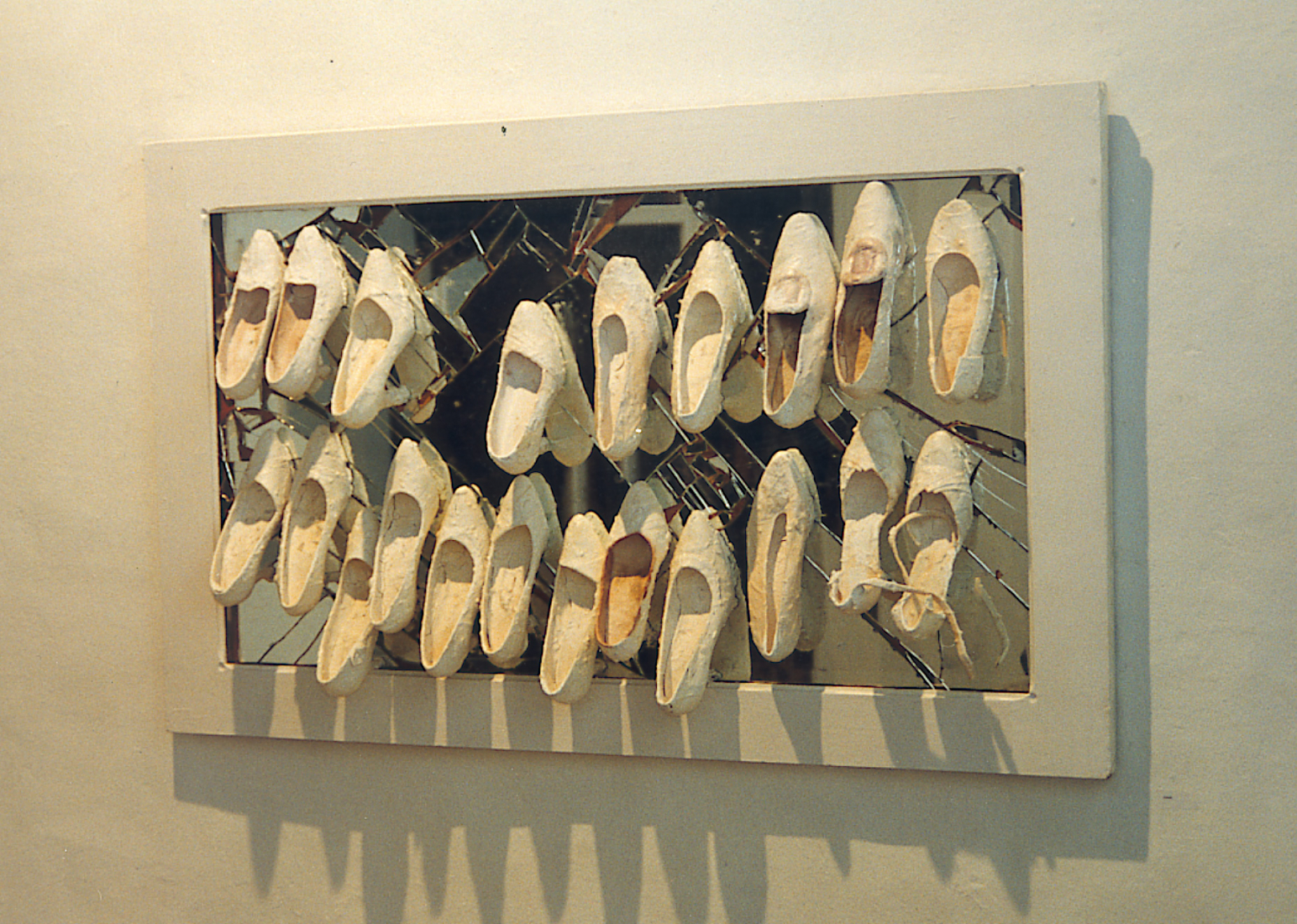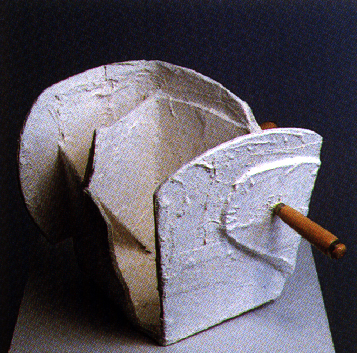De la persona
Of the person
(the man who confused a chair with a goddess)
He had been acquainted with Idroj Sanicne (Jordi Encinas) for several years. From before he began to organize an exhibition, he, and at that moment, as always, Idroj was concentrated in his works. Then, with his subjects (subject + object). And completely abstracted. In the elaboration of poetic forms that did not resemble nothing of anything that he had seen before. Until then. And although they could refer it to some anthropomorphic figures (or to one of those portraits that could be mistaken for some masks), those works by Idroj ("the unidentified subject of art", as he called them the " artist) they were absolutely strange to him. And he wondered if it was perhaps because of his oddity that he did not constantly stop him, to annoy him every time he saw them, to shake him too. In short, telling him that in the world of art things that occur always have reason to exist. But you need to have a certain period of time in order to understand them in some way. Or at least, in order to get into it. Because it is only when it is deepened in those things that disconcert us (as well as in those we see without looking or in those that we dedicate only a fleeting look), that we can venture into it. And realize that what they tell us is that they have some secret. Or they keep a great secret, as they were told by those poetic forms. From the Idroj. When, after having the patience to try to reveal his secret, he noticed that they had taken him to the door of another secret. Still more hidden And it was so (privily secret) how he proposed to want to understand what was hidden behind the veil that covered them. Behind the fabric that disguised what he had not seen in looking at those subjects: his mystery. What he had not been able to capture after having made a first reading. Based on the poetic forms in which those subjects were shown. These strange and rare works. Opacities
And when he thought he had understood what the secret that kept the subjects, he concluded that the investigations of the Idroj had concentrated around his gaze. It began by its relocation, that is, by the disappearance of the active being that perceived, it continued with the production of a vision without a look and finished with the analysis of its limits. That is, with the disappearance of the active being that he perceives. Because it had been his gaze (his gaze, not that of the Idroj) that had been taken by the subjects. Through the reflection of his own eye. In order to include it inside of its forms. And it was as well as he believed to understand that the soul that possessed those subjects was the one of those whose eyes had been reflected (and that they would continue to be reflected) on the surface of their metals. And what had begun as if they were bodies with a virtual identity turned into living organisms that could look at us all through the eyes. Of ours, that were theirs. As well as they could touch us.
And it was when he embarked on the trilogy that the artist called Maracunda (a period of reflection on concepts such as confusion and disorder and alteration in the perception of the real, had to say), in that period in which the senses began to confuse their functions, which he perceived was moving away from everything Idroj wanted him to say. And that everything that had approached the subjects or the forms that he had seen of him, almost frightened him for the whole life in the field that was most characteristic of oblivion. Where the memory has no record.
And it was not until after a while that it was decided to return to try again. To try to understand what that secret was that kept the works that the Idroj did. And it was then when he realized that, through the almost uncontrollable associations that can often be made between objects and words (or between these and images, or between images and their meanings), their works are 'had turned into images that were poetic. Or at least it was the way I perceived them. That is, neither objects nor substitutes for objects. In images that were to be perceived based on their specific reality. Because their images were what they were. And because unlike the previous ones, a soul that was their own was breathing. His soul: that space in which our memories and our forgetfulness were lodged.
And that was why it was not too strange that, having to talk about the person (of what we are or what we thought was once we had come to caress the limits: that person's skin on the which were hidden our hidden parts, inside our body), I thought that the one who could best do it would not be other than the Idroj. For several reasons that were very specific: because of the turbulence that had been felt that is generated, it goes into the interior of his world, due to the strangeness that was distilled from its whitewashed collages ... by the confusion of the sensations that he produced contemplation. Of his works. What he did and what he's doing.
And although he knew for a long time that he wanted to work again with him, he did not tell him what his intentions were until after the summer of 97. He had been thinking; maybe much more than not with any of the others. But until he was not sure he could not let him know ... And when announcing him and saying that his proposal would correspond to that moment in which, inside the course of the cycle, had to talk about the person, perceived that the machine was started automatically. The Idroj's. As if an irreversible process accelerated inside of his thinking. And from that moment on they saw each other a few more times. And what could have gone in a completely different way, began to materialize in the elaboration of allegorical structures. In order to be able to concentrate on everything that the space offered him. From the chapel That is, its architecture and its symbolism. But also with the aim of showing his work in direct relation with some moment. At that moment in which it existed. He and now; but also his work. At the time of teaching to us all what we could be: an accumulation of associations and ideas that gravitate on our heads. In a relatively controlled synchrony of all those images that make up the imagination. Ours.
But there was one thing I could not deny: well understood the meaning of the elements that would shape the Idroj's proposal, he felt he was deeply disoriented. And confused. Perhaps this confusion was what best reflected his agitation? Or the convulsion he was suffering from believing he lived in an unreal time? And, while thinking of some answer, he remembered in words that the artist said: inside each of us there is a stranger who dreams and wants to be someone. He is a lonely being, bored, forgotten and desperately trying to prove that he exists.







